Sugar-Free
Regular
Bubble Gum
Functional Gum
Mint
Fruit
Herbal
Spicy
Chocolate
Supermarkets
Convenience Stores
Online Retail
Specialty Stores
Children
Teenagers
Adults
Senior Citizens
North America
Europe
South America
Asia Pacific
Middle East and Africa
North America Outlook (USD Billion, 2019-2035)
North America Chewing Gum Market by Product Type
Sugar-Free
Regular
Bubble Gum
Functional Gum
North America Chewing Gum Market by Flavor Type
Mint
Fruit
Herbal
Spicy
Chocolate
North America Chewing Gum Market by Distribution Channel Type
Supermarkets
Convenience Stores
Online Retail
Specialty Stores
North America Chewing Gum Market by End User Type
Children
Teenagers
Adults
Senior Citizens
North America Chewing Gum Market by Regional Type
US
Canada
US Outlook (USD Billion, 2019-2035)
US Chewing Gum Market by Product Type
Sugar-Free
Regular
Bubble Gum
Functional Gum
US Chewing Gum Market by Flavor Type
Mint
Fruit
Herbal
Spicy
Chocolate
US Chewing Gum Market by Distribution Channel Type
Supermarkets
Convenience Stores
Online Retail
Specialty Stores
US Chewing Gum Market by End User Type
Children
Teenagers
Adults
Senior Citizens
CANADA Outlook (USD Billion, 2019-2035)
CANADA Chewing Gum Market by Product Type
Sugar-Free
Regular
Bubble Gum
Functional Gum
CANADA Chewing Gum Market by Flavor Type
Mint
Fruit
Herbal
Spicy
Chocolate
CANADA Chewing Gum Market by Distribution Channel Type
Supermarkets
Convenience Stores
Online Retail
Specialty Stores
CANADA Chewing Gum Market by End User Type
Children
Teenagers
Adults
Senior Citizens
Europe Outlook (USD Billion, 2019-2035)
Europe Chewing Gum Market by Product Type
Sugar-Free
Regular
Bubble Gum
Functional Gum
Europe Chewing Gum Market by Flavor Type
Mint
Fruit
Herbal
Spicy
Chocolate
Europe Chewing Gum Market by Distribution Channel Type
Supermarkets
Convenience Stores
Online Retail
Specialty Stores
Europe Chewing Gum Market by End User Type
Children
Teenagers
Adults
Senior Citizens
Europe Chewing Gum Market by Regional Type
Germany
UK
France
Russia
Italy
Spain
Rest of Europe
GERMANY Outlook (USD Billion, 2019-2035)
GERMANY Chewing Gum Market by Product Type
Sugar-Free
Regular
Bubble Gum
Functional Gum
GERMANY Chewing Gum Market by Flavor Type
Mint
Fruit
Herbal
Spicy
Chocolate
GERMANY Chewing Gum Market by Distribution Channel Type
Supermarkets
Convenience Stores
Online Retail
Specialty Stores
GERMANY Chewing Gum Market by End User Type
Children
Teenagers
Adults
Senior Citizens
UK Outlook (USD Billion, 2019-2035)
UK Chewing Gum Market by Product Type
Sugar-Free
Regular
Bubble Gum
Functional Gum
UK Chewing Gum Market by Flavor Type
Mint
Fruit
Herbal
Spicy
Chocolate
UK Chewing Gum Market by Distribution Channel Type
Supermarkets
Convenience Stores
Online Retail
Specialty Stores
UK Chewing Gum Market by End User Type
Children
Teenagers
Adults
Senior Citizens
FRANCE Outlook (USD Billion, 2019-2035)
FRANCE Chewing Gum Market by Product Type
Sugar-Free
Regular
Bubble Gum
Functional Gum
FRANCE Chewing Gum Market by Flavor Type
Mint
Fruit
Herbal
Spicy
Chocolate
FRANCE Chewing Gum Market by Distribution Channel Type
Supermarkets
Convenience Stores
Online Retail
Specialty Stores
FRANCE Chewing Gum Market by End User Type
Children
Teenagers
Adults
Senior Citizens
RUSSIA Outlook (USD Billion, 2019-2035)
RUSSIA Chewing Gum Market by Product Type
Sugar-Free
Regular
Bubble Gum
Functional Gum
RUSSIA Chewing Gum Market by Flavor Type
Mint
Fruit
Herbal
Spicy
Chocolate
RUSSIA Chewing Gum Market by Distribution Channel Type
Supermarkets
Convenience Stores
Online Retail
Specialty Stores
RUSSIA Chewing Gum Market by End User Type
Children
Teenagers
Adults
Senior Citizens
ITALY Outlook (USD Billion, 2019-2035)
ITALY Chewing Gum Market by Product Type
Sugar-Free
Regular
Bubble Gum
Functional Gum
ITALY Chewing Gum Market by Flavor Type
Mint
Fruit
Herbal
Spicy
Chocolate
ITALY Chewing Gum Market by Distribution Channel Type
Supermarkets
Convenience Stores
Online Retail
Specialty Stores
ITALY Chewing Gum Market by End User Type
Children
Teenagers
Adults
Senior Citizens
SPAIN Outlook (USD Billion, 2019-2035)
SPAIN Chewing Gum Market by Product Type
Sugar-Free
Regular
Bubble Gum
Functional Gum
SPAIN Chewing Gum Market by Flavor Type
Mint
Fruit
Herbal
Spicy
Chocolate
SPAIN Chewing Gum Market by Distribution Channel Type
Supermarkets
Convenience Stores
Online Retail
Specialty Stores
SPAIN Chewing Gum Market by End User Type
Children
Teenagers
Adults
Senior Citizens
REST OF EUROPE Outlook (USD Billion, 2019-2035)
REST OF EUROPE Chewing Gum Market by Product Type
Sugar-Free
Regular
Bubble Gum
Functional Gum
REST OF EUROPE Chewing Gum Market by Flavor Type
Mint
Fruit
Herbal
Spicy
Chocolate
REST OF EUROPE Chewing Gum Market by Distribution Channel Type
Supermarkets
Convenience Stores
Online Retail
Specialty Stores
REST OF EUROPE Chewing Gum Market by End User Type
Children
Teenagers
Adults
Senior Citizens
APAC Outlook (USD Billion, 2019-2035)
APAC Chewing Gum Market by Product Type
Sugar-Free
Regular
Bubble Gum
Functional Gum
APAC Chewing Gum Market by Flavor Type
Mint
Fruit
Herbal
Spicy
Chocolate
APAC Chewing Gum Market by Distribution Channel Type
Supermarkets
Convenience Stores
Online Retail
Specialty Stores
APAC Chewing Gum Market by End User Type
Children
Teenagers
Adults
Senior Citizens
APAC Chewing Gum Market by Regional Type
China
India
Japan
South Korea
Malaysia
Thailand
Indonesia
Rest of APAC
CHINA Outlook (USD Billion, 2019-2035)
CHINA Chewing Gum Market by Product Type
Sugar-Free
Regular
Bubble Gum
Functional Gum
CHINA Chewing Gum Market by Flavor Type
Mint
Fruit
Herbal
Spicy
Chocolate
CHINA Chewing Gum Market by Distribution Channel Type
Supermarkets
Convenience Stores
Online Retail
Specialty Stores
CHINA Chewing Gum Market by End User Type
Children
Teenagers
Adults
Senior Citizens
INDIA Outlook (USD Billion, 2019-2035)
INDIA Chewing Gum Market by Product Type
Sugar-Free
Regular
Bubble Gum
Functional Gum
INDIA Chewing Gum Market by Flavor Type
Mint
Fruit
Herbal
Spicy
Chocolate
INDIA Chewing Gum Market by Distribution Channel Type
Supermarkets
Convenience Stores
Online Retail
Specialty Stores
INDIA Chewing Gum Market by End User Type
Children
Teenagers
Adults
Senior Citizens
JAPAN Outlook (USD Billion, 2019-2035)
JAPAN Chewing Gum Market by Product Type
Sugar-Free
Regular
Bubble Gum
Functional Gum
JAPAN Chewing Gum Market by Flavor Type
Mint
Fruit
Herbal
Spicy
Chocolate
JAPAN Chewing Gum Market by Distribution Channel Type
Supermarkets
Convenience Stores
Online Retail
Specialty Stores
JAPAN Chewing Gum Market by End User Type
Children
Teenagers
Adults
Senior Citizens
SOUTH KOREA Outlook (USD Billion, 2019-2035)
SOUTH KOREA Chewing Gum Market by Product Type
Sugar-Free
Regular
Bubble Gum
Functional Gum
SOUTH KOREA Chewing Gum Market by Flavor Type
Mint
Fruit
Herbal
Spicy
Chocolate
SOUTH KOREA Chewing Gum Market by Distribution Channel Type
Supermarkets
Convenience Stores
Online Retail
Specialty Stores
SOUTH KOREA Chewing Gum Market by End User Type
Children
Teenagers
Adults
Senior Citizens
MALAYSIA Outlook (USD Billion, 2019-2035)
MALAYSIA Chewing Gum Market by Product Type
Sugar-Free
Regular
Bubble Gum
Functional Gum
MALAYSIA Chewing Gum Market by Flavor Type
Mint
Fruit
Herbal
Spicy
Chocolate
MALAYSIA Chewing Gum Market by Distribution Channel Type
Supermarkets
Convenience Stores
Online Retail
Specialty Stores
MALAYSIA Chewing Gum Market by End User Type
Children
Teenagers
Adults
Senior Citizens
THAILAND Outlook (USD Billion, 2019-2035)
THAILAND Chewing Gum Market by Product Type
Sugar-Free
Regular
Bubble Gum
Functional Gum
THAILAND Chewing Gum Market by Flavor Type
Mint
Fruit
Herbal
Spicy
Chocolate
THAILAND Chewing Gum Market by Distribution Channel Type
Supermarkets
Convenience Stores
Online Retail
Specialty Stores
THAILAND Chewing Gum Market by End User Type
Children
Teenagers
Adults
Senior Citizens
INDONESIA Outlook (USD Billion, 2019-2035)
INDONESIA Chewing Gum Market by Product Type
Sugar-Free
Regular
Bubble Gum
Functional Gum
INDONESIA Chewing Gum Market by Flavor Type
Mint
Fruit
Herbal
Spicy
Chocolate
INDONESIA Chewing Gum Market by Distribution Channel Type
Supermarkets
Convenience Stores
Online Retail
Specialty Stores
INDONESIA Chewing Gum Market by End User Type
Children
Teenagers
Adults
Senior Citizens
REST OF APAC Outlook (USD Billion, 2019-2035)
REST OF APAC Chewing Gum Market by Product Type
Sugar-Free
Regular
Bubble Gum
Functional Gum
REST OF APAC Chewing Gum Market by Flavor Type
Mint
Fruit
Herbal
Spicy
Chocolate
REST OF APAC Chewing Gum Market by Distribution Channel Type
Supermarkets
Convenience Stores
Online Retail
Specialty Stores
REST OF APAC Chewing Gum Market by End User Type
Children
Teenagers
Adults
Senior Citizens
South America Outlook (USD Billion, 2019-2035)
South America Chewing Gum Market by Product Type
Sugar-Free
Regular
Bubble Gum
Functional Gum
South America Chewing Gum Market by Flavor Type
Mint
Fruit
Herbal
Spicy
Chocolate
South America Chewing Gum Market by Distribution Channel Type
Supermarkets
Convenience Stores
Online Retail
Specialty Stores
South America Chewing Gum Market by End User Type
Children
Teenagers
Adults
Senior Citizens
South America Chewing Gum Market by Regional Type
Brazil
Mexico
Argentina
Rest of South America
BRAZIL Outlook (USD Billion, 2019-2035)
BRAZIL Chewing Gum Market by Product Type
Sugar-Free
Regular
Bubble Gum
Functional Gum
BRAZIL Chewing Gum Market by Flavor Type
Mint
Fruit
Herbal
Spicy
Chocolate
BRAZIL Chewing Gum Market by Distribution Channel Type
Supermarkets
Convenience Stores
Online Retail
Specialty Stores
BRAZIL Chewing Gum Market by End User Type
Children
Teenagers
Adults
Senior Citizens
MEXICO Outlook (USD Billion, 2019-2035)
MEXICO Chewing Gum Market by Product Type
Sugar-Free
Regular
Bubble Gum
Functional Gum
MEXICO Chewing Gum Market by Flavor Type
Mint
Fruit
Herbal
Spicy
Chocolate
MEXICO Chewing Gum Market by Distribution Channel Type
Supermarkets
Convenience Stores
Online Retail
Specialty Stores
MEXICO Chewing Gum Market by End User Type
Children
Teenagers
Adults
Senior Citizens
ARGENTINA Outlook (USD Billion, 2019-2035)
ARGENTINA Chewing Gum Market by Product Type
Sugar-Free
Regular
Bubble Gum
Functional Gum
ARGENTINA Chewing Gum Market by Flavor Type
Mint
Fruit
Herbal
Spicy
Chocolate
ARGENTINA Chewing Gum Market by Distribution Channel Type
Supermarkets
Convenience Stores
Online Retail
Specialty Stores
ARGENTINA Chewing Gum Market by End User Type
Children
Teenagers
Adults
Senior Citizens
REST OF SOUTH AMERICA Outlook (USD Billion, 2019-2035)
REST OF SOUTH AMERICA Chewing Gum Market by Product Type
Sugar-Free
Regular
Bubble Gum
Functional Gum
REST OF SOUTH AMERICA Chewing Gum Market by Flavor Type
Mint
Fruit
Herbal
Spicy
Chocolate
REST OF SOUTH AMERICA Chewing Gum Market by Distribution Channel Type
Supermarkets
Convenience Stores
Online Retail
Specialty Stores
REST OF SOUTH AMERICA Chewing Gum Market by End User Type
Children
Teenagers
Adults
Senior Citizens
MEA Outlook (USD Billion, 2019-2035)
MEA Chewing Gum Market by Product Type
Sugar-Free
Regular
Bubble Gum
Functional Gum
MEA Chewing Gum Market by Flavor Type
Mint
Fruit
Herbal
Spicy
Chocolate
MEA Chewing Gum Market by Distribution Channel Type
Supermarkets
Convenience Stores
Online Retail
Specialty Stores
MEA Chewing Gum Market by End User Type
Children
Teenagers
Adults
Senior Citizens
MEA Chewing Gum Market by Regional Type
GCC Countries
South Africa
Rest of MEA
GCC COUNTRIES Outlook (USD Billion, 2019-2035)
GCC COUNTRIES Chewing Gum Market by Product Type
Sugar-Free
Regular
Bubble Gum
Functional Gum
GCC COUNTRIES Chewing Gum Market by Flavor Type
Mint
Fruit
Herbal
Spicy
Chocolate
GCC COUNTRIES Chewing Gum Market by Distribution Channel Type
Supermarkets
Convenience Stores
Online Retail
Specialty Stores
GCC COUNTRIES Chewing Gum Market by End User Type
Children
Teenagers
Adults
Senior Citizens
SOUTH AFRICA Outlook (USD Billion, 2019-2035)
SOUTH AFRICA Chewing Gum Market by Product Type
Sugar-Free
Regular
Bubble Gum
Functional Gum
SOUTH AFRICA Chewing Gum Market by Flavor Type
Mint
Fruit
Herbal
Spicy
Chocolate
SOUTH AFRICA Chewing Gum Market by Distribution Channel Type
Supermarkets
Convenience Stores
Online Retail
Specialty Stores
SOUTH AFRICA Chewing Gum Market by End User Type
Children
Teenagers
Adults
Senior Citizens
REST OF MEA Outlook (USD Billion, 2019-2035)
REST OF MEA Chewing Gum Market by Product Type
Sugar-Free
Regular
Bubble Gum
Functional Gum
REST OF MEA Chewing Gum Market by Flavor Type
Mint
Fruit
Herbal
Spicy
Chocolate
REST OF MEA Chewing Gum Market by Distribution Channel Type
Supermarkets
Convenience Stores
Online Retail
Specialty Stores
REST OF MEA Chewing Gum Market by End User Type
Children
Teenagers
Adults
Senior Citizens

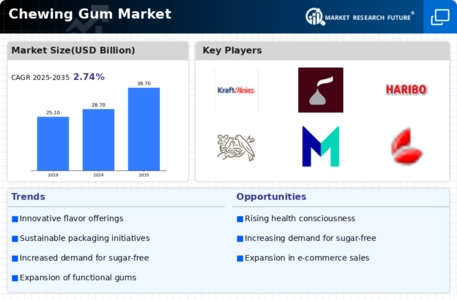
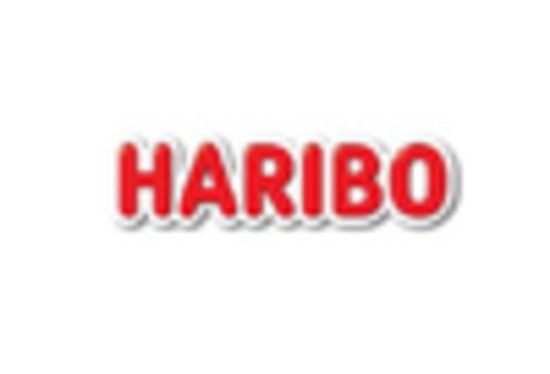


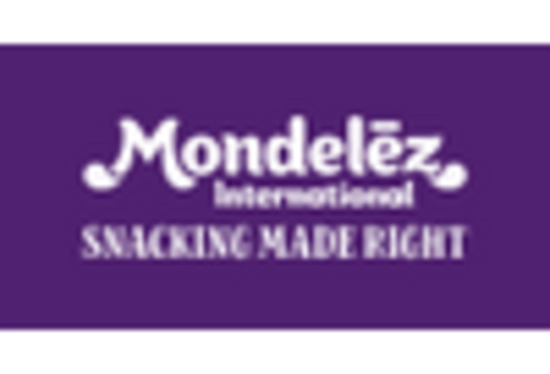
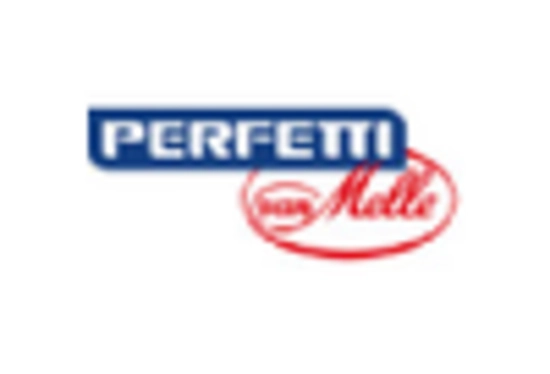
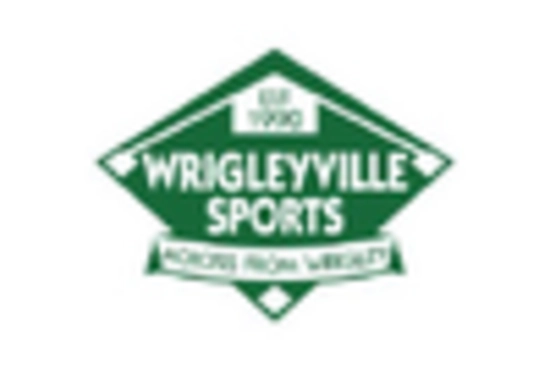









Leave a Comment